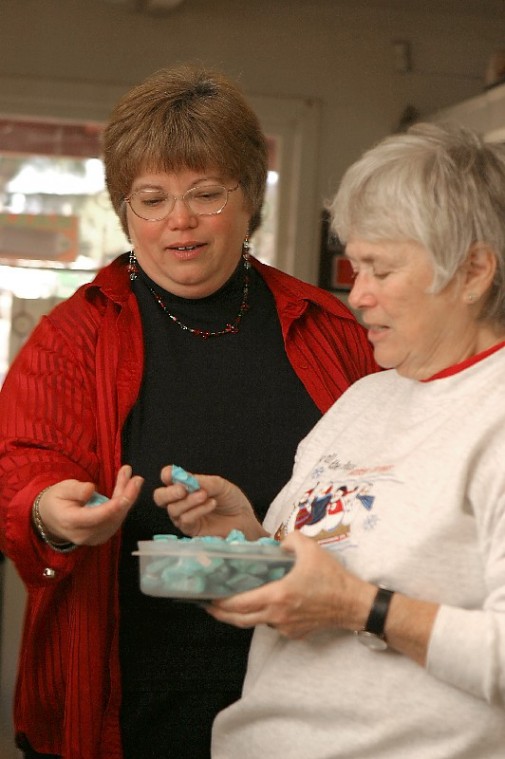
SJB city manager enjoys being close to favorite gem
When people tell Jan McClintock she has a head full of rocks
they mean it as a compliment, not as a put down.
SJB city manager enjoys being close to favorite gem
When people tell Jan McClintock she has a head full of rocks they mean it as a compliment, not as a put down.
Though McClintock is the City Manager for San Juan Bautista in her professional life, in her private life she is a “rock hound” – or rock collector – and has been one for most of her life.
For McClintock, gems and rocks aren’t just precious minerals from the ground. They’re beautiful pieces of nature.
“A lot of people know diamonds, but they don’t know that there are other stones out there,” McClintock said. “Gold and silver are boring.”
McClintock’s life-long passion began when she was still a child growing up in Oklahoma. She’d find lots of Mica rocks and she’d peel them back and try to skip the rocks across ponds.
“I think I got fascinated with stones because we’d go on vacation to see my grandparents in Arkansas,” McClintock said. “We didn’t have a lot of money so as we traveled we’d stop along the road and pick up rocks as part of our vacation.”
Back then there were fewer rules against what rocks people could and couldn’t collect. Today rock collectors have to be cautious about where they collect, McClintock said. Because so many of the mineral rights in areas are owned or rocks are found on private property, there are laws prohibiting people from collecting.
“You can get maps from the [United States Geological Survey] that show collectors where you can and cannot collect. There are books too,” McClintock said.
Part of the reason McClintock came to San Benito County in the first place was because of the gem Benitoite, which is only found in San Benito County.
“I was at a ‘geek’ conference in Monterey, discussing gemology, and I’d never been here, but I knew that this was where Benitoite came from,” McClintock said. “I came to San Juan and that’s where I discovered Tops rock shop.”
Benitoite happens to be McClintock’s favorite gem. Benitoite is blue, McClintock’s favorite color, but the rock is also doubly refractive, meaning that when light shines through the stone it bends a lot.
“It shines brighter than even a diamond, which is singly refractive,” McClintock said. “For us to live in a county with fashionable Benitoite is a pretty special thing when you look at how compliable they are and how long they take to develop.”
Many people only recognize the stones they see at jewelry stores – the run-of-the-mill diamonds, pearls, rubies and emeralds – but McClintock said that when you take it a step further and start looking for the stones that those stores don’t sell, it opens up a whole other world that doesn’t stop.
“Very arguably one of the most interesting things that has happened to gemstones is the shop-at-home TV channels,” McClintock said. “They have opened the public up to more than just diamonds, rubies, emeralds and sapphires. They bring in opaque gemstones and people hear about them. They don’t think those stones are junk. They bring education to the stones that people have passed over previously. It’s interesting to watch the phenomenon, but it’s controversial because jewelers hate the shop-at-homes.”
There are some gems that are only found in select regions of the world and in limited supply. That means that when those stones have been mined out, they will never exist again, McClintock said. A lot of gemstones are found in the Himalayas and in the mountains of Kilimanjaro. Often where beautiful stones are found, there are no roads and the only way to get to the stones is by hiking or taking donkeys.
“Once upon a time amethyst was everywhere. Now it’s almost an exception to find some that isn’t lab grown,” McClintock said.
Patrick O’Donnell can be reached at po*******@**********ws.com.









